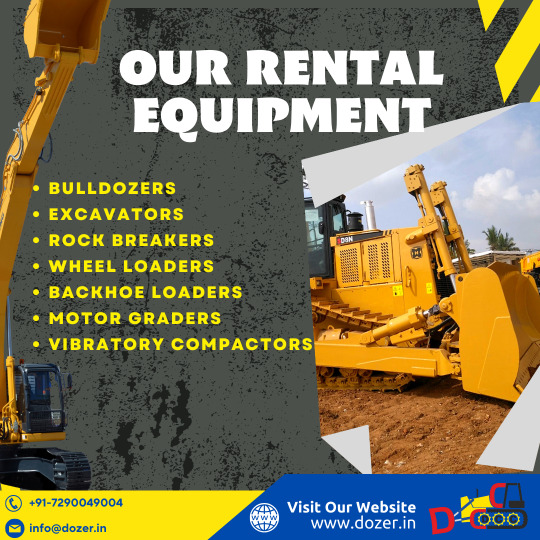#motorgraders
Text

Saluting the spirit of our great nation on this Republic Day! 🇮🇳✨ we takes pride in contributing to India's growth journey. Let's continue building a stronger, brighter future together! 🏗🌟
DCC Infra Pvt. Ltd. Wishing you a very Happy Republic Day! 🇮🇳
#RepublicDayJoy#DCCPatriots#IndiaRising#RepublicDayIndia#PatrioticVibes#JaiHind🇮🇳#26JanuaryCelebration#UnityInDiversity#IndianPride#RepublicDay2024#NationBuilding#FreedomAndUnity#SaluteToOurHeroes#Bulldozers#Excavators#RockBreakers#WheelLoaders#BackhoeLoaders#MotorGraders#DCC#Dccinfra#Dayacharan
0 notes
Video
Use of Grader Heavy Equipment-Part 2
#youtube#interstateheavyequipment#whosellsheavyequipment#whosellsheavyequipmentintexas#whosellsheavyequipmentindallas#whosellsheavyequipmentinhouston#whosellsheavyequipmentingainesville#whosellsheavyequipmentingrapevine#wheretobuyheavyequipment#wheretobuyheavyequipmentparts#wheretobuyconstructionequipment#heavyequipmentforsale#heavyequipmentforsaleintexas#findheavyequipmentandtrucks#useofgraderheavyequipment#motorgrader#grader#motorgraders#graders
0 notes
Video
Use of Grader Heavy Equipment-Part 2
#youtube#interstateheavyequipment#whosellsheavyequipment#whosellsheavyequipmentintexas#whosellsheavyequipmentindallas#whosellsheavyequipmentinhouston#whosellsheavyequipmentinfortworth#whosellsheavyequipmentingainesville#whosellsheavyequipmentingrapevine#wheretobuyheavyequipment#wheretobuyheavyequipmentparts#wheretobuyconstructionequipment#heavyequipmentforsale#heavyequipmentforsaleintexas#heavyequipmentandmachineryforsale#findheavyequipmentandtrucks#useofgraderheavyequipment#motorgrader#grader#motorgraders#graders
0 notes
Video
Use of Grader Heavy Equipment-Part 2
#youtube#interstateheavyequipment#whosellsheavyequipment#whosellsheavyequipmentintexas#whosellsheavyequipmentindallas#whosellsheavyequipmentinhouston#whosellsheavyequipmentinfortworth#whosellsheavyequipmentingainesville#whosellsheavyequipmentingrapevine#wheretobuyheavyequipment#wheretobuyheavyequipmentparts#wheretobuycosntructionequipment#heavyequipmentforsale#heavyequipmentforsaleintexas#heavyequipmentandmachineryforsale#findheavyequipmentandtrucks#useofgraderheavyequipment#motorgrader#grader#motorgraders#graders
0 notes
Video
youtube
Use of Grader Heavy Equipment-Part 2
#youtube#interstateheavyequipment#whosellsheavyequipment#whosellsheavyequipmentintexas#whosellsheavyequipmentindallas#whosellsheavyequipmentinhouston#whosellsheavyequipmentinfortworth#whosellsheavyequipmentingainesville#whosellsheavyequipmentingrapevine#wheretobuyheavyequipment#wheretobuyheavyequipmentparts#wheretobuyconstructionequipment#heavyequipmentforsale#heavyequipmentforsaleintexas#heavyequipmentandmachineryforsale#findheavyequipmentandtrucks#useofgraderheavyequipment#motorgrader#grader#motorgraders#graders
0 notes
Text
Heavy Equipment Inspection Checklist Before and After Operation
What are the heavy equipment inspection checklist before and after operation?Operators of construction machineshave a huge impact on their personal safety and the safety of everyone else on the job site, as well as the maintenance costs and life of the machines they employ. All of this strength stems from the ability to conduct quick but thorough heavy equipment inspections both before and after operations.
These checks are essential for worker safety near machinery and are an important component of preventive maintenance. Before and after getting into any taxi, operators should glance at and for the items listed below. Of course, some heavy equipment has unique parts, functionality, or other variables that demand specialist inspection regions; for specific instructions and recommendations, see the machine’s operator’s manual.
It should also go without saying that equipment that show signs of damage or have any other issues should not be used until the situation is fully resolved. Nonetheless, we stated it. Because it is crucial.
Checklist for Heavy Equipment Inspections
Make sure there are no apparent leaks or pools of fluid under the machine; if there are, the cause must be identified, and the leak fixed.
Examine the tires, rims, and undercarriage for dirt or debris accumulation, excessive wear, and any visible damage. These issues can cause major safety risks and reduce the machine’s performance.
Check the fluid levels to ensure that there is adequate engine oil, hydraulic oil, coolant, diesel, diesel exhaust fluid (DEF), and other essential fluids, as they are the lifeblood of any piece of heavy equipment; too little, and performance suffers, and there’s a chance of costly damage.
Remove any dirt, mud, debris, and materials from around the radiator and other engine parts, as well as from the engine compartment; all engine parts must be able to move, breathe, and cool properly, but any foreign matter might obstruct this.
Examine the air, gasoline, oil, and other filters for damage or leaks; replacing a faulty filter is usually inexpensive and simple, but that isn’t always the case with the harm that untreated filter problems can do.
Check the fan, alternator, and other belts for wear, frays, or other damage; much like with the filters, it’s far better if belt problems are identified and fixed early in terms of machine downtime and expense.
To guarantee smooth, efficient operations and prevent undue wear and damage, inspect the heavy equipment’s greasing points, grease joints, and high-friction locations as needed. The grease points and frequency are detailed in every operator’s manual.
Check hydraulic connections, pressure, and the complete coupling structure; remember to let go of pressure while removing attachments.
Check buckets, teeth, and other ground tools for breaks or damage; these issues can severely restrict productivity, as well as fuel efficiency and safety, and can lead to structural wear and damage.
Check for a flush and fully engaged coupler, as well as securely linked hydraulic hoses and electrical connections, on the attachment mount-up.
Take a few minutes to inspect the machine’s whole structure for wear, damage, and other issues.
Check the operator’s cab for anything that doesn’t belong and remove it.
Before beginning operations, inspect the operator controls, indicator and warning lights, and make sure lighting and safety features such as the backup alarm and rear-view camera are operational; inspect and set the mirrors for best visibility.
Source
#motorgrader#heavyequipmentcompany#whobuysheavyequipmentsherman#whobuysheavyequipmenthouston#whobuysbackhoes#machinerytrader#bobcat#webuytruck#sellyourconstructionequipment#whobuysbulldozers#whobuysingersollrand#skidsteerbuyer#whobuystruckhoes#constructionequipmentcompany#whobuyscaterpillarequipment#equipment#whobuyusedconstructionequipment#wheretosellheavyequipment#ihaveconstructionequipmenttosell#whobuysjohndeereequipment#whobuyscompactors#whobuysoilfilledequipment#wheretheworldbuyheavyequipment#heavyequipmentbuyers#wheretosellusedequipment#topdollarforyourusedmachine#skidsteerbuyers#whobuysheavyequipmentfortworth#whobuysheavyequipmentdallas#whobuysheavyequipmentoklahoma
2 notes
·
View notes
Link
Indian road warriors! 🇮🇳 A2Z Seals has your back (and your grader)! We stock top-notch motor grader seal kits for smooth operation & long life. Don't settle for less, upgrade your grader today! #MotorGraderSeals #A2ZSeals #MadeForIndia
#a2zseals#Motor Grader Seal Kit#oilseal#seals#mining#hydraulic#miningequipment#grader#motorgrader#sealreplacement#constructionparts#heavymachineryparts#equipmentmaintenance#motorgraderseal#motorgraderrebuild#heavyequipmentparts#constructionequipmentparts#gradersealkit
0 notes
Text



Part No:- 319-2228
Description:- Shoe - Circle Guide
Application
Motor Grader:- 120H, 120K, 120K2, 140H, 140K, 140K2, 160H
.
.
Contact: +91-9999978975 or email - [email protected]
https://www.dozerspares.in
#dayacharansons#spareparts#dozer#bulldozer#cat#caterpillar#beml#komatsu#earthmovingmachinery#dozerspares#earthmover#bulldozerparts#dozerparts#heavymachineryparts#excavatorparts#graderparts#edgecutting#motorgrader#ShoeCircleGuide#dozerd8r#120H#120K
0 notes
Text
Important Uses of Concrete Mixer
What are the uses of concrete mixer? A concrete mixer is a motorized equipment that homogeneously mixes concrete, material such as sand or gravel, and water to generate concrete. Concrete mixers range in size from big industrial mixing trucks to small, portable concrete mixers known as micromixers. A concrete mixer is made up of three main components: a motor, a revolving drum, and, in some cases, a chute. The materials for making concrete spin around inside the drum, mixing uniformly and remaining soft for application and shaping.
For the industrial manufacture of ready-mix concrete, especially precast/prestressed concrete, consistent homogeneity and low mixing times are becoming increasingly important in today’s market. As a result, new concrete-making technologies have emerged. As a result, twin-shaft batch mixers are becoming increasingly vital for high-quality concrete production around the world. They create a lot of turbulence in the mix and achieve 95 percent homogeneity with only 30 seconds of mixing time per batch.
A commercial concrete mixer truck is used to mix and transport huge quantities of concrete for use on a construction site. A portable concrete mixer is sufficient for lesser volumes of concrete, often up to two cubic yards (1.83 cubic meters). A portable concrete mixer is usually powered by electricity and sits on a wheeled platform for easy transportation. The rotating drum can be slanted down to allow for the pouring of mixed concrete into a wheelbarrow.
A spinning drum is used to mix the components in a standard concrete mixer. Portable concrete mixers are frequently utilized for smaller volume projects so that the concrete can be mixed on the job site, allowing the workers plenty of time to use it before it hardens. Mixing concrete Making concrete by hand is an alternative to using a machine. Normally, this is done with a wheelbarrow, but several companies have recently started selling customized tarps for this purpose.
A portable concrete mixer is useful for homeowners doing modest concrete tasks such as a patio, sidewalk repair, or small slab. Because a concrete mixer cannot store concrete ready for application indefinitely, it’s critical to know how much concrete you can pour and finish in a certain amount of time. Different types of concrete cure at different rates, so follow the manufacturer’s instructions.
Larger jobs, such as laying a driveway or constructing a basketball court, may necessitate the use of a commercial truck. Commercial concrete mixers require access to the project within a reasonable distance. Swimming pools in the ground are an example of a large-scale project that necessitates truck access.
It’s important to remember that calling a concrete business merely guarantees delivery of the concrete. The price is set at a flat fee per cubic yard ordered, and the truck will only be on site for a certain amount of time. Large projects may necessitate the use of professional concrete finishers to complete the job on schedule. Be sure to have finishers on site and ready to pour before calling a concrete business, and don’t forget to secure any permits required in your location.
At XG Power, you can get a concrete mixer like this one. 9 cubic foot XG Power Concrete Mixer with Subaru Robin 9HP Engine
The drum volume of this heavy-duty concrete mixer is 12 cubic feet, with a 9 cubic foot mix capacity. The Subaru Robin EX27 engine produces 9 horsepower. For reliable mixing, use thick steel drums with rolled reinforced pour lips. Dumping is easier with the reinforced hand wheel, and mix discharge is more controlled. Cowls with ventilation for long-term professional use. Pintile type hitch on a thick towpole.
#whobuyscaseequipment#whobuysjohndeereequipment#whobuyscaterpillarequipment#motorgrader#whobuystruckhoes#whobuyscompactors#whobuysbackhoes#whobuyheavyequipment#whobuyusedconstructionequipment#sellmyheavyequipment#whobuysheavyequipment#ihaveconstructionequipmenttosell#ihaveequipmenttosell#whobuysheavymachinery#wheretosellheavyequipment#whobuysoil-fieldequipment#sellmyconstructionequipment#whobuysconstructionequipment#webuyconstructionequipment#backhoe#constructionequipmentcompany#heavyequipmentcompany#webuytruck#webuyloader#webuyforklift#wheretheworldbuyheavyequipment#topdollarforyourusedmachine#wheretosellusedequipment#heavyequipmentbuyers#skidsteerbuyer
0 notes
Text

🚜🏗Looking to level up your construction game? Check out our rental equipment fleet! From powerful bulldozers to versatile excavators, rock breakers, and more, we've got you covered with top-notch machinery!💪🛠
.
For more info
Call: +91-7290049004
Email: [email protected]
Visit: www.dozer.in/bulldozer-hiring
.
Bulldozer Hire | Excavator Hire | HEMM Equipment Rental | HEMM Equipment Hire | Renting HEMM Equipment India
#dozer#BulldozerRentals#RentalEquipment#ConstructionMachinery#Bulldozers#Excavators#RockBreakers#WheelLoaders#BackhoeLoaders#MotorGraders#HeavyEquipmentRental#Excavator#Bulldozerhire#Excavatorhire#ExcavatorForHire#BulldozerForHire#MachineryRental#EquipmentHire#HeavyMachineryHire#DCC#DCCInfra
0 notes
Video
Use of Grader Heavy Equipment - Part 1
#youtube#interstateheavyequipment#whosellsheavyequipment#whosellsheavyequipmentintexas#whosellsheavyequipmentindallas#whosellsheavyequipmentinhouston#whosellsheavyequipmentinfortworth#whosellsheavyequipmentingainesville#whosellsheavyequipmentingrapevine#wheretobuyheavyequipment#wheretobuyheavyequipmentparts#wheretobuyconstructionequipment#heavyequipmentforsale#heavyequipmentforsaleintexas#heavyequipmentandmachineryforsale#findheavyequipmentandtrucks#motorgrader#grader#motorgraders#graders#useofgraderheavyequipment
0 notes
Video
Use of Grader Heavy Equipment - Part 1
#youtube#interstateheavyequipment#whosellsheavyequipment#whosellsheavyequipmentintexas#whosellsheavyequipmentindallas#whosellsheavyequipmentinhouston#whosellsheavyequipmentinfortworth#whosellsheavyequipmentingainesville#whosellsheavyequipmentingrapevine#wheretobuyheavyequipment#wheretobuyheavyequipmentparts#wheretobuyconstructionequipment#heavyequipmentforsale#heavyequipmentforsaleintexas#heavyequipmentandmachineryforsale#findheavyequipmentandtrucks#motorgrader#graders#motorgraders#grader
0 notes
Video
Use of Grader Heavy Equipment - Part 1
#youtube#interstateheavyequipment#whosellsheavyequipment#whosellsheavyequipmentintexas#whosellsheavyequipmentindallas#whosellsheavyequipmentinhouston#whosellsheavyequipmentinfortworth#whosellsheavyequipmentingainesville#whosellsheavyequipmentingrapevine#wheretobuyheavyequipment#wheretobuyheavyequipmentparts#wheretobuyconstructionequipment#heavyequipmentforsale#heavyequipmentforsaleintexas#heavyequipmentandmachineryforsale#findheavyequipmentandtrucks#whosellsmotorgrader#motorgraders#graders#motorgrader#grader
0 notes
Video
youtube
Use of Grader Heavy Equipment - Part 1
#youtube#interstateheavyequipment#whosellsheavyequipment#whosellsheavyequipmentintexas#whosellsheavyequipmentindallas#whosellsheavyequipmentinhouston#whosellsheavyequipmentinfortworth#whosellsheavyequipmentingainesville#whosellsheavyequipmentingrapevine#wheretobuyheavyequipment#wheretobuyheavyequipmentparts#wheretobuyconstructionequipment#findheavyequipmentandtrucks#heavyequipmentforsale#heavyequipmentforsaleintexas#heavyequipmentandmachineryforsale#whosellsmotorgrader#motorgrader#grader#motorgraders#graders#useofgraderheavyequipment
0 notes
Text
We buy construction equipment, whether new or used. We deal with both small contractors and
large corporations. We buy all types of construction equipment; gas, oil, and mining equipment
So, if you are thinking of selling your used equipment running or non-running, look no further.
Visit sellyourconstructionequipment.com or call 214-773-0207.
#whobuysjohndeereequipment#whobuysconstructionequipment#equipment#ihaveconstructionequipmenttosell#machinerytrader#webuyconstructionequipment#whobuysheavymachinery#backhoe#whobuysheavyequipment#constructionequipmentcompany#sellmyconstructionequipment#motorgrader#whobuysheavyequipmentarkansas#sellmyheavyequipment#whobuyscranes#whobuyusedconstructionequipment#whobuysbulldozers#whobuysskidsteers#whobuysoil-fieldequipment#whobuysloaders#whobuyscompactors#whobuysheavyequipmentfortworth#skidsteerbuyers#webuyforklift#sellyourconstructionequipment#whobuysbobcat#johndeere#wheretheworldbuyheavyequipment#whobuysheavyequipmentoklahoma#webuytruck
1 note
·
View note
